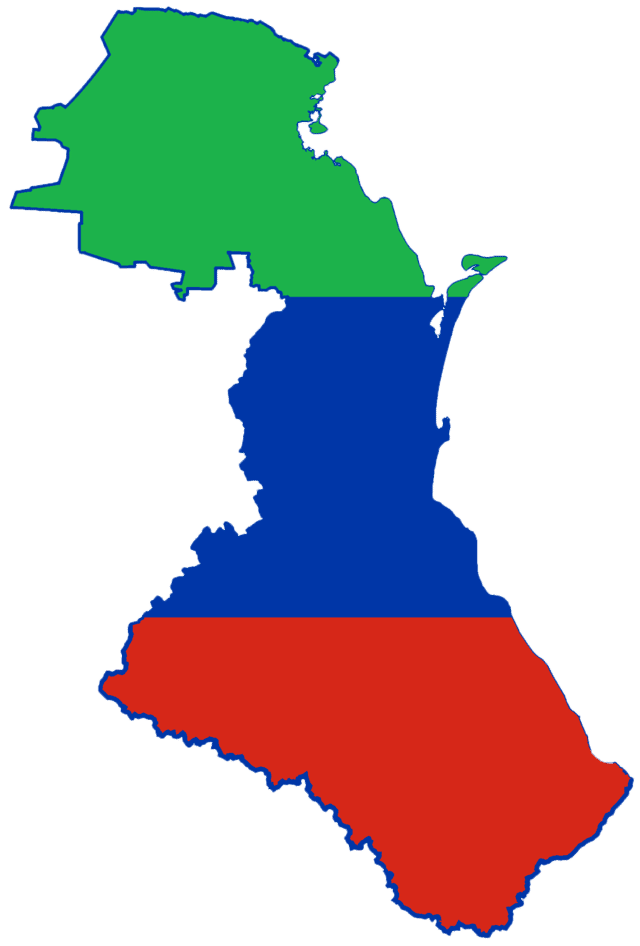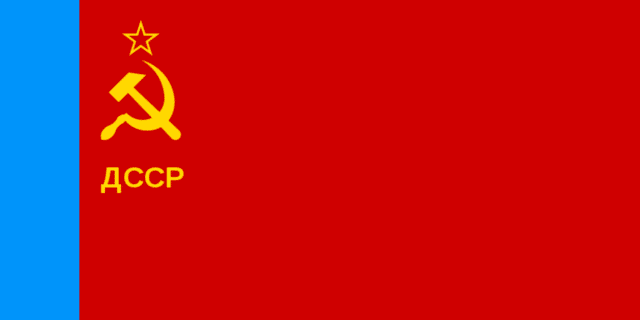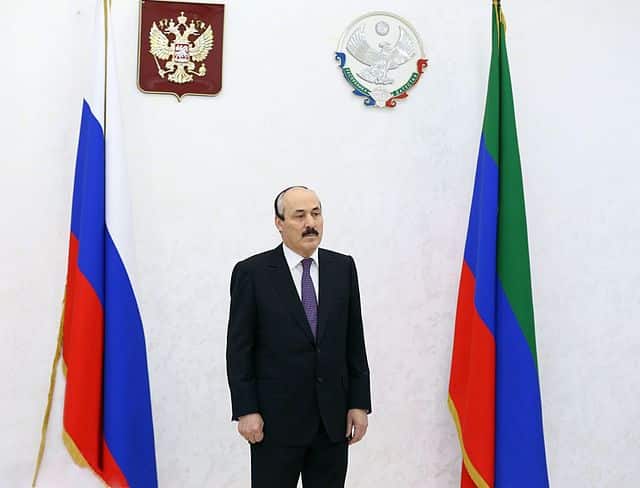Contents
Officially known as the Republic of Dagestan, this Russian republic is located in Eastern Europe’s North Caucasus region, close to the Caspian Sea. It is a component of the North Caucasian Federal District and is situated north of the Greater Caucasus. The first Dagestan flag had ASSR initials on it, which resembled the Soviet Union. However, later on, it got modified several times.
Do you want to know more about the Republic of Dagestan, its history, location, and flag development milestones? Then you are reading the right article. Below, we will explore a significant national emblem – the Dagestan flag.
Characteristics Of Dagestan
The Dagestan flag and the country itself were heavily influenced by the nationalities and ethnic groups in and around the country. The republic, which forms the southernmost point of Russia, has land boundaries with Stavropol Krai to the northwest, Azerbaijan, and Georgia. To the south and southwest, Dagestan borders Chechnya and Kalmykia to the west and north. The capital and biggest city of the republic is Makhachkala. Other significant cities include Derbent, Kizlyar, Izberbash, Kaspiysk, and Buynaksk.
With a population of more than 3.1 million and an area of 50,300 square kilometers (19,400 square miles), Dagestan is home to more than 30 ethnic groups and 81 different nationalities. The republic is one of Russia’s most linguistically and ethnically diverse administrative regions, with 14 recognized languages and 12 ethnic groups making up more than 1% of the total population.
Most of the population speaks one of the Turkic or Northeast Caucasian languages, while Russian is the official language and the lingua franca of the republic.
The Greater Caucasus Mountains, which encircle the southern part of the republic, cover the majority of Dagestan. On the border with Azerbaijan, at 14,670 feet, the Bazardüzü mountain is the highest point. Diklosmta, Gora Addala Shukgelmezr, and Gora Dyultydag are other noteworthy mountains. One of the most famous and beautiful towns in the highlands is called Kumukh.
With a notable lack of precipitation, the climate is categorized as a continental climate. It is one of Russia’s hottest regions. It is subarctic in mountainous areas. Oil, natural gas, coal, and a variety of other minerals are abundant in Dagestan. Time in Dagestan is GMT+3. All year long, Dagestan follows Moscow Standard Time. There are no time modifications regarding daylight saving time.
History Of Dagestan
Historical events and the Soviet Union had a significant influence on the change of the Dagestan flag design. Caucasian Albania, which corresponds to modern-day Azerbaijan and southern Dagestan, was a vassal of the Parthian Empire in the first few centuries AD before becoming its subject. It became a satrapy (province) within the enormous empire’s boundaries with the rise of the Sassanian Empire.
The Dagestan region has a rich history of cultural and religious influences, as it was frequently contested by the Roman Empire and Sassanid Persians. Despite the Roman Empire’s efforts to gain control of the area, the Sassanids maintained their authority. Over time, many of the inhabitants of Dagestan adopted Christianity, alongside their traditional Zoroastrian beliefs.
The Sassanids took control in the fifth century, and by the sixth century, they had built a sturdy castle at Derbent that became known as the Caspian Gates. In the meantime, the Huns and Caucasian Avars conquered the northern portion of Dagestan.
A well-known Chechen leader named Tapa Chermoyev served as the nation’s first prime minister. The Dagestan Autonomous Soviet Socialist Republic was established on January 20, 1921, following the Bolsheviks’ triumph in their battle against the White Army and local nationalists after more than three years of conflict. Dagestan declared itself a republic within the Russian Soviet federation at the same time as the newly formed Soviet Union was solidifying its hold over the area, but it did not follow the other ASSRs in claiming statehood.
In an effort to establish an “autonomous Islamic state of Dagestan,” the Islamic International Peacekeeping Brigade (IPPB), a Chechen Islamist organization, began a military invasion of Dagestan on August 7, 1999. A portion of the local populace helped the invaders, but the Russian military and local paramilitary organizations drove them back.
Later that year, in reaction to the assault, Russian soldiers once again invaded Chechnya. One of the highest unemployment rates in Russia is found in Dagestan. During the 2022 Russian invasion of Ukraine, soldiers from Dagestan took part. Dagestan became the focal point of the 2022 North Caucasian anti-mobilization demonstrations in September.
On July 10, 2003, Dagestan’s constitution was ratified. It states that the State Council, which is made up of members from 14 different ethnic groups, has the highest level of executive authority. The members of the government are chosen by the State Council.

Development Stages of Dagestan Flag
First Dagestan Flag
The Dagestan flag is the primary Republican emblem. Following the conversion of the Dagestan ASSR into the Republic of Dagestan within the Russian Federation, the flag of the Republic of Dagestan was adopted. First, red flags were defaced with the ASSR name’s initials, and then an RSFSR flag was defaced with the same. Following the dissolution of the Soviet Union, Dagestan’s flag lost the “A” (for “independent”) and was changed to just “ДССР”.
The Dagestan Autonomous Soviet Socialist Republic adopted several flags of the standard ASSR after its formation in 1921 from portions of the Mountainous Republic of the Northern Caucasus.

Current Dagestan Flag
The flag was officially adopted on February 26th, 1994. Before the present horizontal tricolor was chosen in 1994, a banner with horizontal blue and yellow stripes may have been used briefly in 1993 and 1994.
The current Dagestan flag has a horizontal tricolor of red, blue, and green that represents the Caspian Sea, Islam, and the Caspian Sea. The flag’s ratio was modified from 1:2 to 2:3 on November 19, 2003, and the central stripe was changed from light blue to blue.

Dagestan Flag Design
Three colorful stripes of the same width make up the web of the Dagestan flag. As previously stated, it is produced in the form of a rectangle in proportion 2:3. Speaking of colors, it has red on the bottom, blue in the middle, and green at the top.
The Dagestan flag had legal and significant status in the country. A coat of arms was also adopted in 1994, symbolizing the nation’s political, social, and cultural principles. It is circular and constructed in the style of a heraldic shield. The golden eagle, which represents the sun, is situated in the middle, over which the golden disk towers.

Symbolism of Dagestan Flag
The tricolor of the Dagestan flag represents development, Islam, fertility, and life. The flag also symbolizes the Caspian Sea’s magnificence and beauty while emphasizing bravery, fortitude, and knowledge. The republic’s emblem represents the local populace as well as its traditions, laws, and regulations.
All Republicans refer to the state’s symbols with the utmost regard. Children pick up this trait at school: treating things with regard, respect, and pride. The symbolism linked with each hue of the Dagestani flag is different. For example, the color green is said to represent Islam, Dagestan’s national religion. It personifies life and represents the earth’s fecundity.
The color blue represents the harmony of the Dagestani people. It serves as a reminder of the significance of the Caspian Sea to the nation.
Red has a wide range of connotations. It is related to people’s courage, sincere courage, and commitment to others. This hue is a representation of democracy since it represents the people’s enlightenment and the power of the intellect.

Guidelines for Displaying the Dagestan Flag
The Dagestan Flag Protocol outlines the proper usage and display of the republic’s official symbols on registered aircraft. The flag serves as a legal component of state-awarded honors and as a heraldic foundation. While it may be used for decorative purposes, it must always be done with respect and adherence to the law. The use of the flag implies accountability for its proper usage.
The banner is raised on flagpoles, ship masts, and structures. Regardless of the ownership structure, it is adorned with public associations, institutions, and organizations. The flag is flown on the canvas towers used for urban holidays in residential complexes. The banner is permanently raised in the courtrooms, in the offices where people work, and in the structures where governmental agencies are housed.
Etymology of Dagestan Country Name
Above, we explored Dagestan flag history, symbolism, and development. Let us now explain more about the country’s etymology. Dagestan, which means “Land of the Mountains,” is a term of Turkish and Persian roots. The suffix -stan in Persian indicates “land,” whereas the Turkish word da means “mountain.” Lekia, Avaria, and Tarki were various names for several parts of Dagestan. The eastern Caucasus, which the Russian Empire occupied in 1860 and called the Dagestan Oblast, is referred to historically as “Dagestan.”
Originally known as the Dagestan Autonomous Soviet Socialist Republic, the modern, more autonomous Republic of Dagestan has a substantially greater area and was founded in 1921 by incorporating the eastern portion of Terek Oblast.
Bottom Line
After the Dagestan ASSR was transformed into the Republic of Dagestan inside the Russian Federation, the flag of that country was adopted. The Dagestan flag serves as the national emblem of the country. It is respected and loved by the whole nation. The banner has seen several changes throughout history. The ultimate, recent flag design was accepted by the legislative authorities in 2003 and has stayed the same since then.